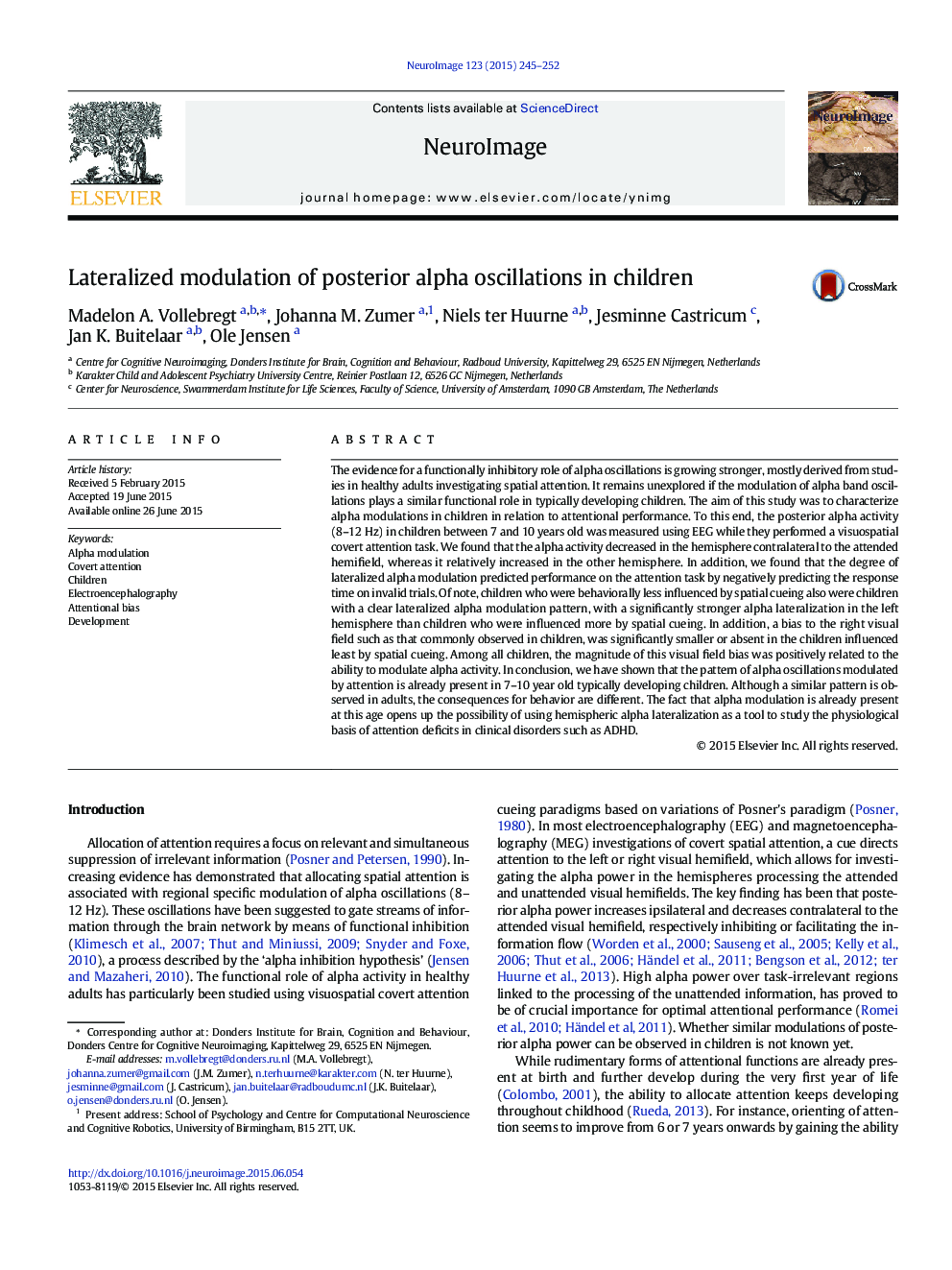| کد مقاله | کد نشریه | سال انتشار | مقاله انگلیسی | نسخه تمام متن |
|---|---|---|---|---|
| 6024750 | 1580884 | 2015 | 8 صفحه PDF | دانلود رایگان |
- Healthy children showed adult alpha lateralization patterns during covert attention.
- Alpha lateralization did not predict an attentional cueing benefit.
- Children less influenced by spatial cueing had stronger left alpha modulation.
- Children more influenced by spatial cueing displayed a bias to the right hemifield.
The evidence for a functionally inhibitory role of alpha oscillations is growing stronger, mostly derived from studies in healthy adults investigating spatial attention. It remains unexplored if the modulation of alpha band oscillations plays a similar functional role in typically developing children. The aim of this study was to characterize alpha modulations in children in relation to attentional performance. To this end, the posterior alpha activity (8-12Â Hz) in children between 7 and 10Â years old was measured using EEG while they performed a visuospatial covert attention task. We found that the alpha activity decreased in the hemisphere contralateral to the attended hemifield, whereas it relatively increased in the other hemisphere. In addition, we found that the degree of lateralized alpha modulation predicted performance on the attention task by negatively predicting the response time on invalid trials. Of note, children who were behaviorally less influenced by spatial cueing also were children with a clear lateralized alpha modulation pattern, with a significantly stronger alpha lateralization in the left hemisphere than children who were influenced more by spatial cueing. In addition, a bias to the right visual field such as that commonly observed in children, was significantly smaller or absent in the children influenced least by spatial cueing. Among all children, the magnitude of this visual field bias was positively related to the ability to modulate alpha activity. In conclusion, we have shown that the pattern of alpha oscillations modulated by attention is already present in 7-10Â year old typically developing children. Although a similar pattern is observed in adults, the consequences for behavior are different. The fact that alpha modulation is already present at this age opens up the possibility of using hemispheric alpha lateralization as a tool to study the physiological basis of attention deficits in clinical disorders such as ADHD.
Journal: NeuroImage - Volume 123, December 2015, Pages 245-252
